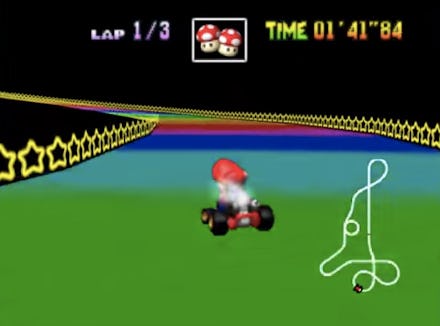Scientists Created Cement That Glows and Light-Up Roads Could Be Coming

The Rainbow Road from Mario Kart might become a reality.
A team of researchers at Michoacan University of San Nicolás de Hidalgo in Mexico designed a kind of phosphorescent cement that doesn't need electricity to glow, according to Scientific American.
"Cement is an opaque body, it does not allow the passage of light to the interior, so we must make a change in its microstructure to allow a partial entry of light into the interior for it to have this behavior," researcher José Carlos Rubio Ávalos said, according to Scientific American.
So to change its microstructure, the team of researchers used the same raw materials needed to manufacture cement and combined it with additives to modify it in a way that would allow light to pass through the material. The amount of additives used impacts both how intense the material would glow and in what color — if you used the glowing cement on the road, for example, you wouldn't want it to be so lit that it'd blind the drivers.
The glowing roads of the future can power up by absorbing energy from radiation — like ultraviolet sun rays — during the day, and then use that energy to illuminate at night. Even on an overcast day, the phosphorescent cement can still suck in enough rays to glow for up to 12 hours, Scientific American reported.
Converting your neighborhood into Rainbow Road isn't necessarily the most valuable application for the bright — researchers think the energy-efficient roads could be important in developing countries.
"It's an application that can be worth developing in countries and areas with poor access to electricity in communities with poor life levels, as it doesn't consume electricity," researcher at the Spanish National Research Council Carmen Andrade said, according to Scientific American. Andrade added that "cement is a very alkaline material, so the stability of these compounds should be studied ... and also how to repair it."
Read more: